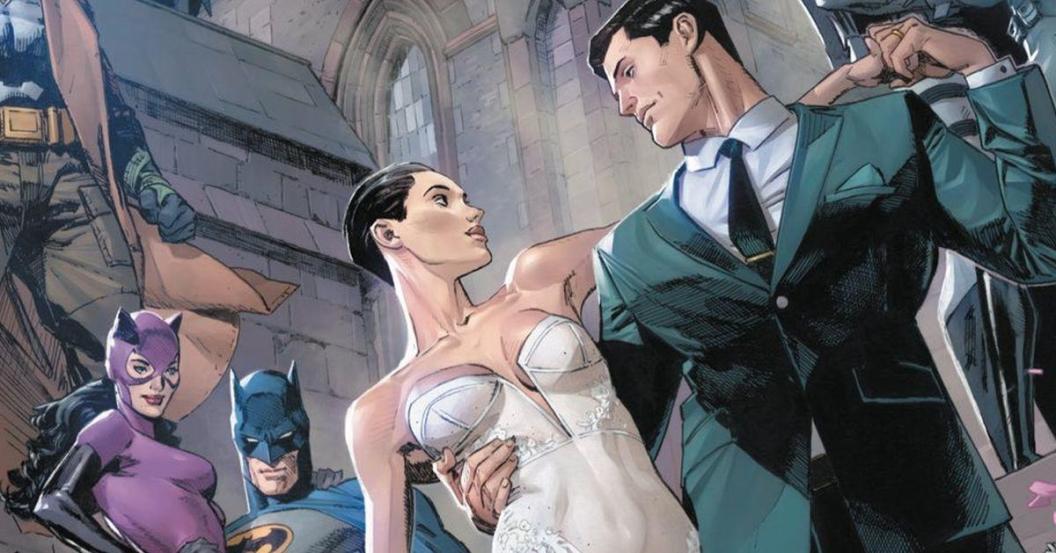
To say Tom King is one of the most polarizing writers in the business is an understatement. King is mostly known for his works at DC with various projects every year. To some, he’s one of the very best that DC has to offer while to others, he’s the worst thing that’s ever happened to modern comics. With insults akin to that of Star Wars prequel era George Lucas, King has made quite the reputation through many books over the years. One such book and likely the one every comic reader has heard about is when he took over Batman, taking on the series after Scott Snyder’s legendary run. With the weight of DC’s biggest seller on his shoulders, and having to follow one of the best reviewed titles in all of the New 52, King did the impossible.
No matter how you view it, King made one of the most talked about runs on Batman. 85 issues on a bi-weekly schedule for three years is an impressive feat for any writer. While not every story would land with readers and questionable choices regarding Nightwing being shot that in turn derailed his solo series for two years was rough, there was a lot of excellent work as well. In particular, the best change King did was break down Batman in a way not before seen. King wanted to deconstruct the Caped Crusader and have him deal with his emotions (or lack thereof) in every story and that has continued to this day, well after King’s run. King famously uses comics to break down his own thoughts about grief and the emotions that come with it at all stages and it’s a tactic has given readers the first truly mature take on Batman. It’s why it’s so controversial.
How Tom King Used Grief to Change the Dark Knight Forever

First used in the story arc “I am Suicide,” King introduces Batman’s struggle with grief on a deeper level than we’ve seen before. Explaining that Batman is Bruce’s own strange version of a sort of living suicide, we see a Batman who does what he does in the hope that the outcome (aka his death) would reunite him with his parents and finally give him peace. The thought overwhelms him as he goes to Santa Prisca to face off with Bane while professing this all to Catwoman to explain how he operates. This of course would be one of the moments fans would turn on King and his run as a whole but did quite the opposite for others. Albeit a bit of odd way to portray it, it gives the reader an insight into the thought and emotions of Batman in a way the hadn’t been written before: seen in this light, Batman isn’t just trying to make Gotham better; he’s self-medicating with his own suffering being his drug.
After that arc, the idea of Batman’s troubling emotions became the thesis statement of the run: if Bruce found peace, Batman would end. As such Batman would become a lot closer with Catwoman and, thus, putting their infamous “will they won’t they?” on the surface. With a lot of thoughts on how to proceed, Bruce proposed to Selina and she said yes. With their relationship now being a core component in King’s run, the series changes little by little. Gone is the dynamic duo and now the couple test their relationship. Seeking approval from Talia Al Ghul, or learning what the Joker makes of the situation, the writing’s on the wall Batman has changed. Yes, he still fights for justice, but there’s a different gravity there as the idea of a life beyond all of his pain seems within reach and he seem potentially content with finally retiring from his dark role. Many have criticized this but it’s great character work for Batman. It adds for a new layer of humanity to the Dark Knight in ways that he had never shown before. He’s no longer merely a symbol; King’s Batman is a man.
While Batman had people he cared for before (including the Bat Family) the idea of him embracing love so much so that he’d want to retire from his quest was something completely different. It showed the readers that the “never ending war” could end and, by proxy, that even Batman could “grow up”. While I’m sure most readers wouldn’t want Bruce to stop his crusade, just the idea of it reflects a deep maturity and the way our own adult lives shift and change. More than that, King showed it could happen, that Batman could change, could be put down, that Bruce could move on.
We all know now how King’s story ends, however. Batman doesn’t get to move on. The wedding doesn’t happen, Bruce doesn’t get his healing and his happily ever after. DC has to sell more Batman stories, after all. But the idea of an emotionally mature and enriched Batman is something that is here to stay. Other writers since King have incorporated Bruce’s emotions into the series and character and particularly this aspect was included very heavily in Chip Zdarsky’s run with Bruce facing multiple emotions in every single issue leading him to break down and go solo for a little while. It’s safe to say that the character is forever changed.
When Matt Fraction takes over in September with a new #1, it will be interesting to see how Batman evolves next, but no matter where that run goes, King’s mark on the Dark Knight truly made the icon grow up and for that, fans should be forever grateful.
Are you a fan of an emotionally complex Batman? Let us know down in the comments.
The post Tom King’s Batman Run Was DC’s First Truly Mature Take on the Character (& That’s Why It’s Controversial) appeared first on ComicBook.com.

